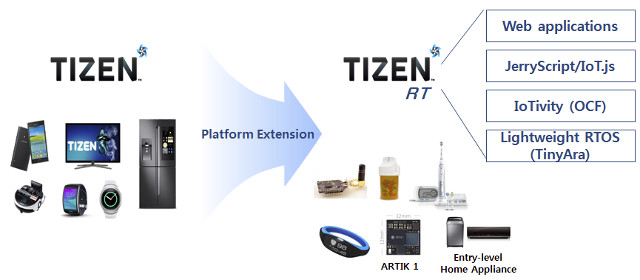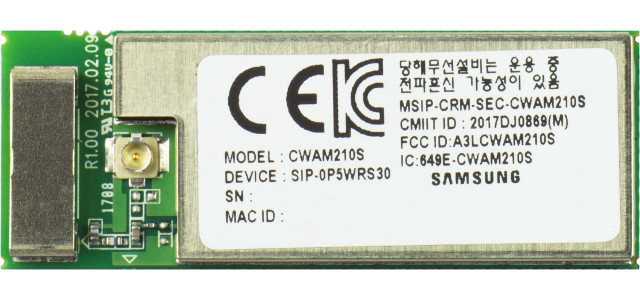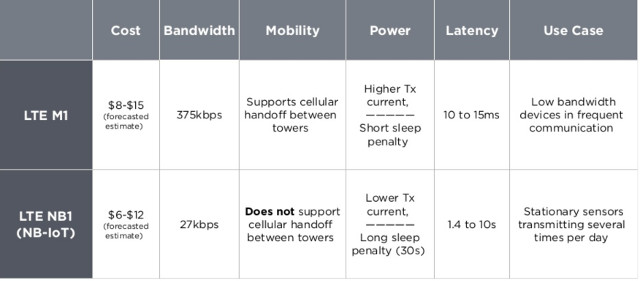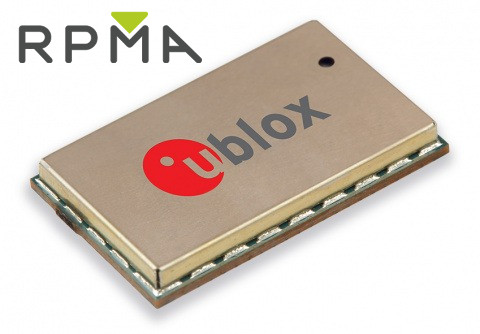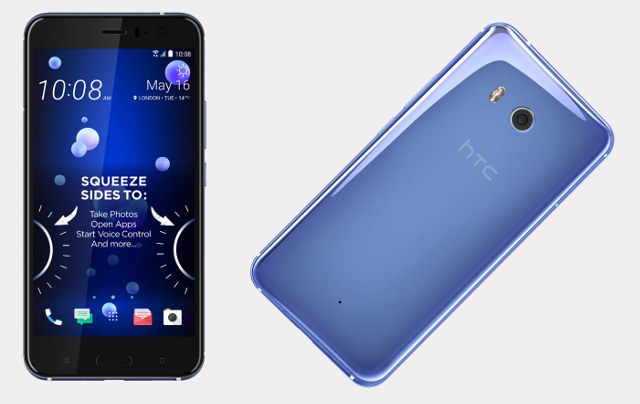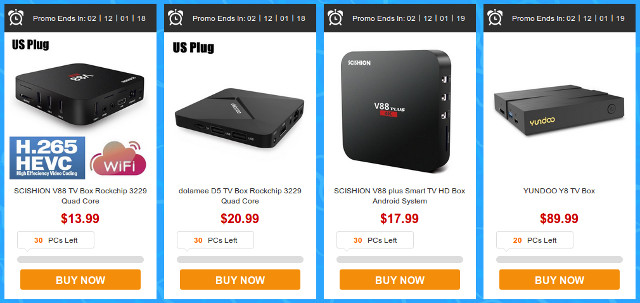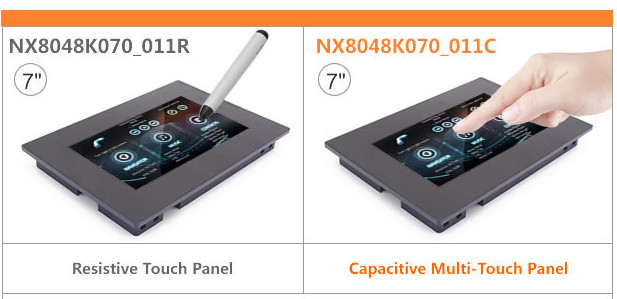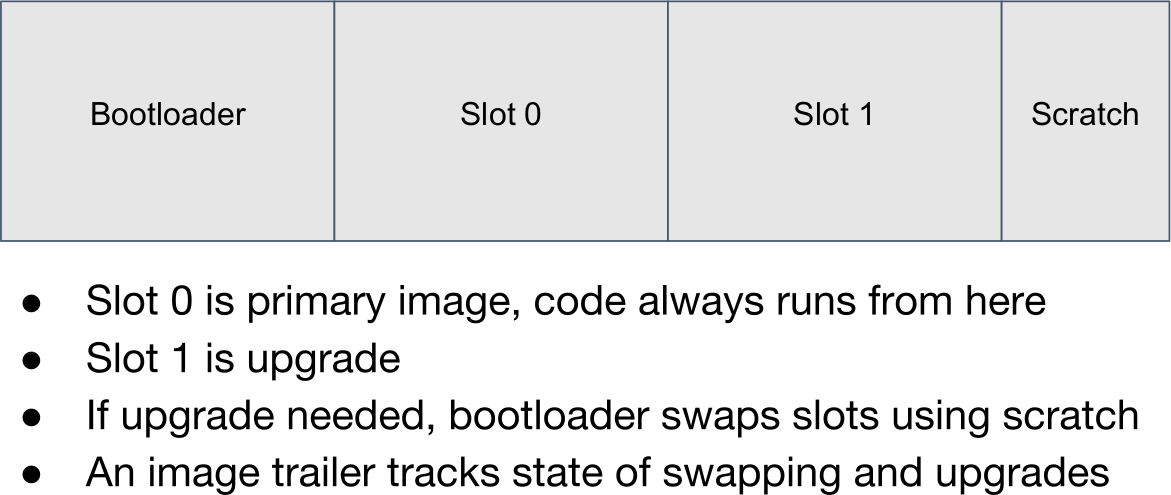We’ve already seen the announcement of Samsung ARTIK 053 WiFi module with Tizen RT this morning, but it appears that Tizen RT (Real Time) is part of a Tizen 4.0 that will add support to IoT devices, as well as introduce changes from the developers’ perspective. Samsung Electronics talked a bit more about Tizen Next (Tizen 4.0) at the Tizen Developer Conference (TDC) 2017 taking in place on May 16-17 in San Francisco. Few details are provided in the press released, but we could learn that “the Tizen 4.0 platform has been extended to Tizen RT (Real-Time) to involve high-end products such as TVs and mobile devices as well as low-end products such as thermostats, scales, bulbs, and more”. Tizen RT page explains that the real-time operating system is designed to run on Cortex M/R MCU with less than 2 MB RAM, less than 16 MB flash, and consists of […]
Samsung ARTIK 053 WiFi IoT Module Runs Tizen RT on an ARM Cortex R4 MCU
Samsung has just introduced the latest member of its Artik family at IoT World 2017. ARTIK 053 is a WiFi module powered by an ARM Cortex R4 wireless micro-controller @ 320 MHz with hardware based security, GPIO, SPI, and I2C ports, and running Tizen RT real-time operating system. Artik 053 module specifications: MCU – 32-bit ARM Cortex R4 @ 320MHz with 1280 KB RAM for general use, 128 KB RAM for global IPC data (likely Samsung Exynos i T200, or a variant without an ARM Cortex M0+ core) Storage – 8 MB flash Connectivity – 802.11 b/g/n WiFi @ 2.4 GHz Expansion – 29 dedicated GPIO ports, 2x SPI, 4x UART (2-pin), 4x ADC, 1x JTAG, 2x I2C Security – AES/DES/TDES, SHA-1/SHA-2, PKA (Public Key Accelerator), PRNG/DTRNG (Random Number Generators), Secure key storage, Physical Unclonable Function (PUF) Power Supply – 5 to 12VDC input voltage Dimensions – 40 x 15 x […]
The Future of Cellular IoT Explained – LTE M1, LTE NB-IoT, eSIM, and Battery Life Hype
Telecom companies also want their share of the IoT business, but with 2G to 4G cellular technology often being too power hungry and/or expensive for this market, 2G on-going – or upcoming – sunset depending on your location, LTE Cat M1 and LTE Cat NB1 (aka NB-IoT) standards have been developed, and used in products like Pycom FiPy board, and SARA-R4 and SARA-M2 modules. If you want to have an overview learn about the new LTE IoT standards and the future of cellular IoT, Particle has published a useful presentation – embedded below – dealing with both, as well as eSIM (Embedded SIM), 2G sunset, and battery life expectations. The main takeaways from my reading of the presentation: LTE NB1 is better suited for low power stationary sensors transmitting a small amount of data a few times a day. Requires new hardware and software LTE M1 can be used for […]
u-blox SARA-S200 RPMA Module Supports the Machine Network
RPMA is one of the many LPWAN IoT communication standards, but it does not get as much press coverage as SigFox or LoRa because it targets larger scale deployments, and is not really accessible to individuals. It’s still used by companies in many countries, and u-blox has just released SARA-S200 RPMA module that will also work with the Machine Network, also relying on RPMA and managed by Ingenu. u-blox SARA-S200 module specifications: Connectivity Wireless Frequency – 2.4 GHz ISM Radio Spectrum – 80 MHz Occupied Bandwidth – 1 MHz Modulation – Dynamic – Direct Sequence Spread Spectrum (D-DSSS) Multiple Access Scheme – Random Phase Multiple Access (RPMA) Transmit Power – +22 dBm Receive Sensitivity – -133 dBm Data Throughput – 100 kB per day Link budget – 176 dB (FCC/IC) Host Interface – 7-wire SPI that includes handshaking for deep sleep modes Power Supply – 3.2 V to 3.4 V […]
HTC U11 Android Smartphone Adds “Edge Sense” Squeeze Input, Ranks Best at DxOMark Mobile Camera Benchmark
We’ve come so far in the smartphone market that most hardware releases are rather boring with a processor a little faster, maybe a higher resolution screen and so on, without real exciting innovations. HTC U11 does change that somewhat as the smartphone allows to interaction by squeezing the edges for example to quickly take a picture. The company calls that “Edge Sense” technology. HTC U11 specifications: SoC – Qualcomm Snapdragon 835 octa-core processor @ up to 2.45 GHz System Memory – 4GB / 6GB RAM Storage – 64GB / 128GB flash, micro SD slot up to 2TB (shared with SIM2 slot), flex storage (aka adoptable) supported Display – 5.5″ Quad HD (2560 x 1440 pixels) Super LCD; 3D Corning Gorilla Glass 5 Cellular Connectivity Dual nano SIM 2G/2.5G – GSM/GPRS/EDGE @ 850/900/1800/1900 MHz 3G – UMTS @ 800/900/1900/2100 (B5/B8/B2/B1), HSDPA 42, HSUPA 5.76 4G LTE – Cat 15 LTE up […]
Rockchip Android TV Boxes Promotion Starting at $13.99 (US Only)
GearBest is organizing a promotion for its US warehouse, and there are three good deals for TV boxes, especially with Rockchip RK3229 based SCISHION V88 going for $13.99 (limited to 30 units). Make sure you only buy one, as usually, the company will cancel orders with more than one piece for this type of promotion. If the 1GB RAM in V88 is too little for you, you may consider V88 Plus model with 2GB selling for $17.99, or Dolamee D5. There’s also a $10 discount$10 discount on Yundoo Y8 RK3399 TV Box. They also have some other discounts for 3D Printers, and drones/rc toys. All you need is a physical address in the US.
Nextion Enhanced NX8048K070 is a 7″ Resistive or Capacitive Programmable Touch Display with an Optional Enclosure
Nextion displays are designed to be controlled by MCU boards with the user interface designed in Nextion Editor drag-and-drop tool. ITEAD Studio launched them in 2015, and I played with Nextion 2.4″ and 5.0″ models, but at the time, I found the Windows only Nextion Editor program not to be that user-friendly and inconvenient to use, as for example, UI designs do not automatically scale across all display sizes. The company is now back with a 7″ model, available with resistive or capacitive touch panel, and featuring an ARM7 processor exposing 8 GPIOs. Nextion Enhanced NX8048K070 (_011) specifications: CPU – ARM7 processor @ 108 MHz with 8K RAM, 1024 EEPROM, 1024 bytes instruction buffer Storage – 32MB flash memory, micro SD card slot Display – 7″ TFT display with resistive or capacitive panel; resolution: 800×480; 65K colors; adjustable brightness: 0 to 230 nit Expansion – 8x GPIOs including 4x PWM, […]
MCUBoot is an Open Source Secure Bootloader for IoT / MCUs
Bootloaders takes care of the initial boot sequence on the hardware before the operating system takes over. For example, U-boot is often used in embedded systems as the bootloader before starting the main operating systems such as Linux or FreeBSD. MCUBoot is also a bootloader, but it targets the IoT, here referring to MCU based systems with limited memory and storage capacity, and is born out of work on Apache Mynewt OS, when developers decided to develop the bootloader separately from the operating system. MCUBoot is designed to run on small & low cost systems running on MCU with ~512 KB flash, ~256 KB RAM, and currently supports Zephyr OS and Mynewt, with support for other RTOS also considered. Due to constraint the bootloader uses minimal features with a flash driver, a single thread, and crypto services. The project also aims at solving security and field firmware updates. To address the […]


